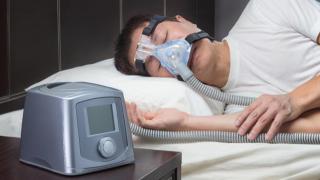Uninsured Americans May Find Naloxone Expensive
Uninsured Americans May Find Naloxone Expensive

Introduction
According to a recent RAND Corporation study, many uninsured Americans find it prohibitively expensive to purchase the opioid antidote naloxone, which presents a barrier to the treatment's ability to save more people who overdose on opioids.
While legislation that makes it simpler to prescribe and procure naloxone has expanded its use, the out-of-pocket cost of the prescription has increased significantly for those without insurance while reducing for many who do.
According to the survey, while out-of-pocket expenses for individuals without insurance grew by more than 500% between 2014 and 2018, they decreased on average by 26% for those with health insurance. Nearly one-third of opioid overdose deaths occur in uninsured Americans, who account for around 20% of adults with opioid use disorders.
The cost of naloxone is almost probably preventing its more widespread use among the uninsured, according to the study's lead author, an economist at the nonprofit research organization RAND. The out-of-pocket expenses need to be given more consideration by policymakers who want to further increase access to naloxone, particularly among the uninsured and underprivileged.
Increased naloxone distribution is one of the tactics used by federal and state governments to combat the opioid crisis since it can if administered quickly, reverse the effects of an opioid overdose. While several states have passed legislation to make it simpler to prescribe and administer naloxone, potential financial hurdles to naloxone access have received less attention.
In order to analyze trends in out-of-pocket expenses, researchers from RAND and the University of Southern California looked at more than 700,000 prescription records from 2010 to 2018 for both generic and name-brand naloxone. More than 70% of the nation's retail pharmacies were represented in the sample.
Over the course of the trial, more naloxone prescriptions were filled. While 11,432 naloxone prescriptions were filled in the sample in 2010, there were 386,249 filled in 2018.
The increase in naloxone prescriptions was not evenly distributed, despite changes in the law that have made it simpler to get naloxone and pharmaceutical breakthroughs that have made it possible for people to administer naloxone. While naloxone distribution among the insured significantly increased beginning in 2017, naloxone access among the uninsured did not see comparable advances.
According to researchers, the cost is probably a key factor in the reduced use among the uninsured. The majority of those with health insurance saw a decrease in out-of-pocket expenses as naloxone use rose, whereas those without insurance saw an increase.
In 2014, those with insurance paid an average of $27 out-of-pocket for each naloxone prescription, compared to $35 for those without coverage. By 2018, the average out-of-pocket expense for a naloxone prescription for those without insurance was $250. In the same year, the insured paid $18 on average out-of-pocket for each naloxone prescription.
Financial impediments to naloxone access have received less attention from federal and state policies than legal ones. These findings show that even if naloxone access has increased, out-of-pocket expenses continue to be a major barrier, especially for those without insurance.
According to researchers, authorities should think about adopting price subsidies for naloxone purchases, controlling copays for the insured, and releasing coupons aimed at the uninsured to encourage the usage of naloxone and avoid opioid overdose deaths. The federal Centers for Disease Control and Prevention and the National Institute on Drug Abuse supported the study.
Latest News
Texas Trial to Decide J&J’s $10B Talcum Powder Settlement
A high-stakes trial in Texas will determine whether Johnson & Johnson (J&J) can resolve tens of thousands of talcum powder cancer lawsuits through a…




